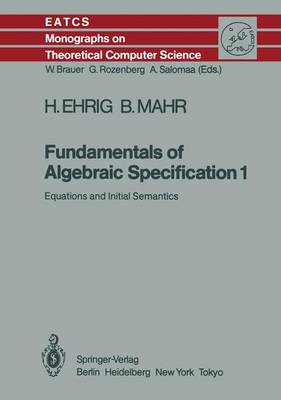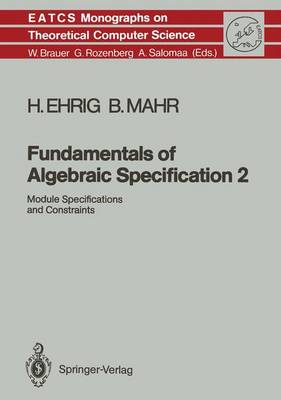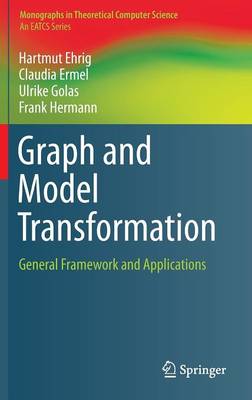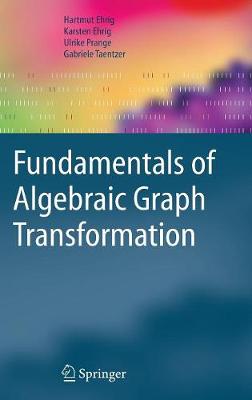Monographs in Theoretical Computer Science. An EATCS
2 primary works • 4 total works
Book 6
Book 21
Fundamentals of Algebraic Specification 2
by Hartmut Ehrig and Bernd Mahr
Graph and Model Transformation
by Hartmut Ehrig, Claudia Ermel, Ulrike Golas, and Frank Hermann
This book is a comprehensive explanation of graph and model transformation. It contains a detailed introduction, including basic results and applications of the algebraic theory of graph transformations, and references to the historical context. Then in the main part the book contains detailed chapters on M-adhesive categories, M-adhesive transformation systems, and multi-amalgamated transformations, and model transformation based on triple graph grammars. In the final part of the book the authors examine application of the techniques in various domains, including chapters on case studies and tool support.
The book will be of interest to researchers and practitioners in the areas of theoretical computer science, software engineering, concurrent and distributed systems, and visual modelling.
Fundamentals of Algebraic Graph Transformation
by Hartmut Ehrig, Karsten Ehrig, Ulrike Prange, and Gabriele Taentzer
Graphs are widely used to represent structural information in the form of objects and connections between them. Graph transformation is the rule-based manipulation of graphs, an increasingly important concept in computer science and related fields. This is the first textbook treatment of the algebraic approach to graph transformation, based on algebraic structures and category theory.
Part I is an introduction to the classical case of graph and typed graph transformation. In Part II basic and advanced results are first shown for an abstract form of replacement systems, so-called adhesive high-level replacement systems based on category theory, and are then instantiated to several forms of graph and Petri net transformation systems. Part III develops typed attributed graph transformation, a technique of key relevance in the modeling of visual languages and in model transformation. Part IV contains a practical case study on model transformation and a presentation of the AGG (attributed graph grammar) tool environment. Finally the appendix covers the basics of category theory, signatures and algebras.
The book addresses both research scientists and graduate students in computer science, mathematics and engineering.



